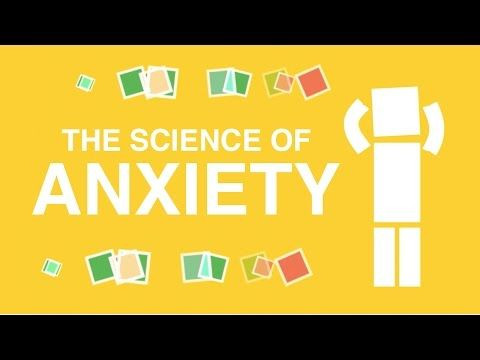Anxiety And The Human Brain: This Is What Happens When Anxiety Attacks

Your palms get sweaty, heart starts racing, and obsessive thoughts overcome you in a way it seems you have a brick on your chest. This is a normal biological response to the fear and panic brought on by anxiety. What’s the difference, then, between these regular feelings of anxiety and a true anxiety disorder, and how does it affect our brain function?
In the Life Noggin video, “The Science of Anxiety,” host Patrick Graziosi explains 18 percent of people experience what is known as an anxiety disorder. This is defined as a mental illness in which the anxiety lasts for at least six months and is characterized by distress that has the potential to interfere with a person’s normal life.
Phobias may trigger an anxiety disorder, which can lead to a person completely avoiding certain situations. This closely resembles a social anxiety disorder, which involves overwhelming worry about being judged by others or being embarrassed in public, but this can be combatted. A recent study published in the journal Motivation and Emotion found simply just being kind to people can actually reduce the severity of your anxiety. This helps curb anxiety because it gets you to focus on doing something nice for others that takes you out of your own head and gets you to focus on other people rather than how you're coming across.
A different kind of anxiety that involves persistent excessive worrying and tension but may not have an obvious trigger is called generalized anxiety disorder. People suffering from the condition can’t get rid of their concerns although they realize their anxiety is more drastic than what they’re experiencing. They can’t relax, startle easily, and have trouble concentrating, but what is happening to the brain during these anxiety attacks?
The amygdala, part of the limbic system, is responsible for fear and other emotional reactions. It communicates with the hypothalamus to initiate the fight-or-flight response, which produces the release of epinephrine, increasing the body's heart rate and blood pressure. The physical symptoms seen in people with panic attacks evolve from the sympathetic nervous system which kicks into overdrive.
Treatment for anxiety involves some type of psychotherapy or different drugs. Treatment may be complicated if people have more than one anxiety disorder or if they suffer from depression, substance abuse, or other co-existing conditions.
Living with anxiety and seeking treatment can be an anxious feat, but it will help reduce further health complications in the future.



























